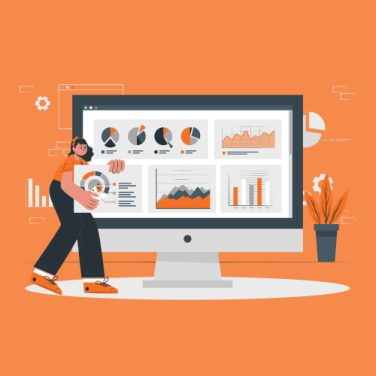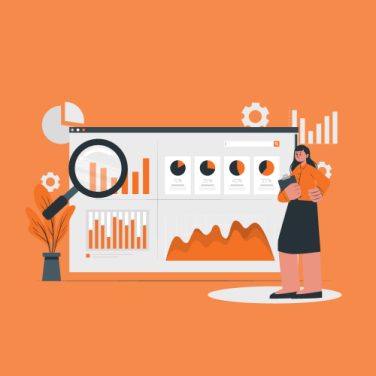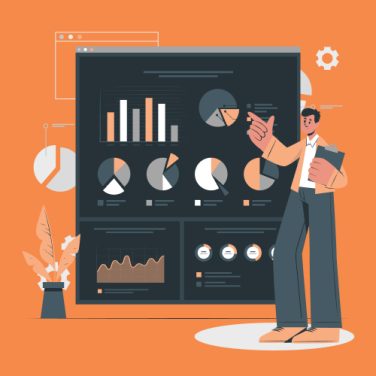In 2025, the hiring landscape is evolving faster than ever. Organisations face an unprecedented surge in applications as remote work expands global talent pools. To handle this influx, Artificial Intelligence (AI) in talent acquisition has emerged as a strategic imperative.
By automating sourcing and screening, AI drives efficiency and elevates candidate quality while navigating complex compliance and ethical demands. With regulations tightening around data privacy and bias, integrated AI-enabled HRIS platforms such as MiHCM offer a vital competitive edge.
The new landscape of talent acquisition
Traditional manual processes buckle under the weight of thousands of resumes and fragmented candidate data. Recruiters need tools that provide:
- Automated sourcing and screening to sift large applicant volumes.
- Intelligent candidate profiling to identify high-potential talent rapidly.
- Bias detection to ensure fair evaluation and reduce compliance risk.
- Seamless integration with HRIS for unified data and analytics.
By embedding AI-driven modules directly into MiHCM Lite and Enterprise, organisations can shorten time-to-hire by up to 50% and significantly improve candidate quality. This convergence of AI in hiring and end-to-end HR workflows sets the stage for smarter talent acquisition that adapts to evolving business needs and regulatory frameworks.
Simultaneously, regulatory frameworks such as GDPR and the EU AI Act impose strict requirements on data handling and algorithmic fairness. AI in recruitment now must balance innovation with responsible design.
MiHCM Data & AI introduces built-in bias mitigation tools and audit trails that align with guidelines and emerging AI regulations, ensuring transparency and accountability across every step of candidate evaluation.
AI use cases in talent acquisition: Sourcing, screening and onboarding
Effective use of AI in talent acquisition transforms traditional workflows across sourcing, screening, and onboarding. AI and recruitment companies are leveraging machine learning models to drive efficiency and enhance candidate experiences at every touchpoint.
This section explores leading use cases and illustrates how MiHCM’s AI toolkit empowers recruiters to deliver on the promise of smarter hiring.
Sourcing and outreach: Modern sourcing solutions harness AI to identify and engage candidates proactively. Key capabilities include:
- Programmatic job ads optimised in real time through predictive budget allocation.
- Candidate rediscovery that reengages past applicants aligned with new roles.
- Passive talent pool mining using skills-based filters to surface high-potential prospects.
- Automated outreach with personalised messaging patterns driven by NLP models.
MiHCM Lite and Enterprise dashboards provide visibility into sourcing performance, enabling recruiters to adjust targeting criteria quickly and reduce time-to-hire by up to 30%.
Screening and matching: Advanced resume parsing and skills matching leverage ML to evaluate competencies and fit accurately. Key features of AI-driven screening include:
- Deep resume analysis to extract skills, experience, and cultural indicators.
- AI-driven ranking that prioritises candidates based on predictive success scores.
- Bias minimisation through anonymised profile evaluation and standardised assessments.
By automating routine screening tasks, talent acquisition teams refocus on high-value activities like strategic sourcing and candidate relationship building.
Onboarding automation: Personalised onboarding experiences boost retention and ramp-up speed. AI-powered onboarding flows offer:
- Automated scheduling of orientation sessions and compliance trainings.
- Task reminders and progress tracking via chatbots accessible 24/7.
- Personalised learning paths tailored to role and skill gaps.
- Integration with HR systems for seamless data transfer and digital form completion.
These capabilities reduce administrative overhead by 40% and ensure new hires engage with relevant resources from day one.
Implementing these AI modules within an integrated HRIS ensures end-to-end visibility and continuous optimisation. Recruitment leaders can monitor performance metrics in real time, iterating on models to align with business goals and evolving talent needs.
Together, these use cases demonstrate how artificial intelligence in hiring streamlines critical TA functions. With MiHCM’s suite, organisations unlock actionable insights and deliver consistent, high-quality candidate journeys.
Building responsible AI for fair & bias-free hiring
Ensuring fairness in talent acquisition requires proactive bias mitigation in every AI model lifecycle stage. Sources of bias may stem from historical hiring data, skewed sample populations, or algorithmic assumptions. By implementing comprehensive controls and regular audits, talent acquisition teams can maintain compliant, transparent processes aligned with regulatory requirements.
Bias mitigation techniques
Key techniques to build responsible AI include:
| Technique | Description |
|---|---|
| Diverse Training Data | Use representative datasets spanning demographics, geographies, and experience levels. |
| Continuous Model Audits | Periodic evaluation of model outputs to detect performance drift and unintended bias. |
| Human-in-the-Loop Review | Expert oversight at critical decision points to validate AI recommendations. |
| Bias Detection Modules | Integrated tools in MiHCM Data & AI that flag demographic disparities and track fairness metrics. |
| Transparent Algorithm Design | Documentation of feature selection, weighting, and decision logic for auditability. |
Understanding sources of bias is critical. Historical recruitment data may underrepresent certain groups, leading to skewed patterns in model training. Similarly, over-reliance on keyword matching can inadvertently favour applicants with access to specific terminology.
To counteract these issues, talent acquisition teams should employ data sampling strategies and synthetic augmentation techniques that balance candidate profiles.
Implementing bias detection modules involves integrating automated disparity analysis into the model pipeline. These modules track sensitive attributes, calculate disparity indices, and generate real-time alerts if thresholds are exceeded. Combined with manual reviews, this hybrid approach ensures AI-driven decisions uphold fairness standards.
Bias audit metrics involve calculating disparity ratios and demographic impact measurements at each funnel stage. By tracking these figures, teams can identify potential algorithmic biases early and initiate remediation. Feedback loops with recruiters and candidates refine models and address edge cases that automated systems may miss.
Best practices also demand cross-functional collaboration, where HR, legal, and data science teams define bias thresholds and remediation protocols. Organisations should establish a governance framework that mandates retraining schedules, model validation reports, and stakeholder sign-off procedures.
Regulatory frameworks such as the GDPR, the EU Artificial Intelligence Act, and EEOC guidelines impose requirements on data privacy, explainability, and non-discrimination. By aligning AI pipelines with these statutes, businesses reduce legal risk and foster candidate trust.
Regular bias audits, supported by MiHCM Data & AI, generate compliance documentation and promote continuous improvement across recruitment workflows.
AI governance framework
Establishing a robust governance structure is essential for managing risks and maximising ROI from AI initiatives in talent acquisition.
A clear framework promotes accountability, standardises processes, and supports transparent, ethical decision-making.
- Governance committee: Form a cross-functional team with stakeholders from Talent Acquisition, IT, Legal, and Compliance to set AI strategy and policies.
- Data ownership: Define clear data stewardship roles to manage sourcing, storage, and preprocessing of candidate information.
- Model validation: Implement validation protocols that test models against benchmarks for accuracy, fairness, and performance drift.
- Update cadence: Schedule routine retraining and calibration cycles, aligned with quarterly or biannual business reviews.
- Documentation and audit trails: Maintain comprehensive records of model development, deployment, and decision logic for regulatory compliance.
- Risk assessment: Conduct impact assessments for new AI features, evaluating potential bias, privacy, and security implications.
- Change management: Develop training programs and communication plans to equip recruiters with AI tool proficiency and clarify the human-AI collaboration model.
- Performance metrics: Monitor KPIs such as time-to-hire, candidate satisfaction, and bias disparity indices to evaluate governance effectiveness.
Change management is as critical as technology deployment. Talent acquisition teams must receive structured training on AI functionalities, best practices, and escalation protocols.
Transparent communication with hiring managers and candidates ensures trust in AI-enabled processes. Sample training modules include hands-on workshops, user guides, and ongoing support forums.
Data policies should specify retention periods, consent mechanisms, and access controls. Integrating these policies into the governance framework reduces legal exposure and ensures candidate privacy rights are respected throughout the hiring lifecycle.
Measuring AI performance: Key metrics for talent acquisition
Quantifying the impact of AI in talent acquisition requires a robust set of metrics tailored to TA objectives. By tracking key performance indicators, organisations can demonstrate ROI, identify optimisation opportunities, and ensure alignment with business goals. Below are essential metrics for effective AI-driven recruitment.
| Metric | Definition | Target |
|---|---|---|
| Time-to-Hire Reduction | Change in average days from job posting to offer acceptance. | 20–40% decrease |
| Cost-per-Hire Improvement | Average recruitment spend per hire compared over periods. | 15–30% savings |
| Quality-of-Hire Index | Weighted score based on performance, retention & manager satisfaction. | ≥80/100 |
| Candidate Experience Score | NPS or satisfaction rating from applicant surveys. | ≥70 NPS |
| Bias Disparity Index | Measure of demographic outcome variance across hiring stages. | — |
Each metric provides a lens into different dimensions of the recruitment process. Bias audit metrics involve calculating disparity ratios and demographic impact measurements at each funnel stage. By tracking these figures, teams can identify potential algorithmic biases early and initiate remediation. For example, a variance above threshold in interview invitation rates across gender groups triggers a review of screening criteria and model weighting.
Improvements in cost-per-hire often stem from reduced reliance on external agencies and optimised ad spend through AI-driven programmatic sourcing. Monitoring this metric over time reveals trends in channel effectiveness and guides budget reallocation strategies in line with corporate objectives.
Quality-of-hire assessments combine performance ratings, hiring manager feedback, and retention data at defined intervals post-hire. AI’s predictive analytics can forecast performance outcomes based on historical patterns, enabling pre-emptive interventions for high-risk hires.
Building a real-time analytics dashboard
Integrating these metrics into a centralised dashboard enables TA leaders to monitor performance continuously. Real-time data feeds, visualisations, and alert thresholds help teams identify anomalies, such as sudden bias spikes or declining application completion rates. Configurable widgets allow stakeholders to slice metrics by department, location, or role seniority.
With MiHCM SmartAssist strategic decision-making capabilities, the dashboard can surface prescriptive insights—recommending adjustments to sourcing channels, assessment workflows, or model parameters. Automated reporting functions streamline governance reviews, providing audit-ready documentation for compliance with GDPR and the EEOC.
Alert mechanisms can be configured to notify stakeholders via email or collaboration platforms when specific KPIs cross predefined thresholds, such as a sudden increase in time-to-hire or drop in candidate NPS. This real-time visibility accelerates decision-making and fosters accountability across hiring teams.
By combining data-driven HR decisions with AI governance best practices, organisations can maintain transparency, optimise resource allocation, and drive continuous improvement in talent acquisition performance.
Collaboration between TA and IT: Integrating AI into HRIS
Seamless integration of AI in talent acquisition relies on close collaboration between TA and IT teams. Establishing clear technical standards and integration pathways ensures that AI modules embed smoothly within existing HRIS ecosystems, maintaining data security and operational resilience.
Technical integration best practices:
- Align business and technical requirements: Conduct joint workshops with TA leaders and IT architects to define objectives, data flows, and compliance constraints.
- API-first design: Enable modular integration of MiHCM Data & AI, MiA, and SmartAssist components into core HR systems.
- Middleware and data lakes: Deploy middleware solutions or data lakes to normalise candidate data from ATS, CRM, and external sources, ensuring consistent schemas.
- Security and compliance: Implement encryption, authentication, and role-based access controls. Align with standards such as ISO 27001 and SOC 2.
- Iterative feedback loops: Adopt agile development practices, with bi-weekly sprints that incorporate end-user feedback to refine AI models and UI experiences.
- Scalability and performance: Architect cloud-native deployments with auto-scaling and load balancing to support peak recruiting periods and global operations.
- Data governance: Enforce data quality rules, lineage tracking, and retention policies. Integrate with MiHCM governance dashboards for transparency.
- Testing and validation: Conduct unit, integration, and user acceptance testing. Simulate real-world scenarios to validate AI outputs against business requirements.
Aligning talent acquisition goals with IT architecture begins with a shared roadmap that prioritises key milestones, such as data ingestion, model deployment, and user training. By incorporating security and compliance checks into pipeline workflows, organisations mitigate risk and reduce time-to-market for AI-driven features.
APIs and middleware serve as the connective tissue between TA platforms and AI modules. For example, candidate information captured in the ATS can flow through secure APIs into MiHCM Data & AI for predictive scoring, then return recommendations to the recruiter’s dashboard in MiHCM Enterprise. This seamless loop ensures data consistency and preserves audit trails necessary for compliance.
Iterative feedback loops foster co-development between TA users and IT teams. Early prototypes of AI functionalities, such as resume ranking or chatbot responses, can be piloted with small user groups. Feedback on model accuracy, interface usability, and workflow integration informs subsequent sprint backlogs, leading to rapid, user-centric enhancements.
Robust documentation and version control practices are critical. Maintaining detailed API specs, data schemas, and model version histories enables efficient troubleshooting and rollback when necessary. Containerisation of AI services using Docker and orchestration platforms like Kubernetes further standardises deployments and simplifies environment management.
Establishing dedicated staging and testing environments mirrors production data flows without exposing live candidate details. Synthetic datasets can validate edge cases and maintain compliance with candidate privacy policies. Regular disaster recovery drills ensure continuity and resilience of AI-driven TA processes.
Close coordination with cybersecurity teams ensures that integrations meet enterprise-wide security standards. Regular penetration testing and vulnerability assessments identify potential risks before they impact candidate data. Automated alerts on attempted breaches or unusual data access patterns trigger immediate investigation and remediation.
MiHCM in action: Integrating AI into your talent acquisition workflow
Introducing MiHCM’s integrated AI solution suite showcases how AI in talent acquisition drives end-to-end efficiency and fairness.
By combining streamlined sourcing dashboards, automated screening, predictive analytics, and strategic recommendations, MiHCM empowers recruiting teams to focus on high-value activities and strategic talent planning.
End-to-end AI-powered hiring with MiHCM
Workflow illustration:
- Sourcing insights: AI-enhanced sourcing dashboards that dynamically rank channels, recommend budget allocations, and identify passive candidates based on historical success metrics.
- Screening and engagement: Automate candidate evaluation using machine learning models that parse resumes, score competencies, and facilitate initial Q&A through conversational chatbots. Interview scheduling is auto-optimised for recruiter and candidate availability.
- Onboarding and integration: Talent Acquisition & Onboarding features automate task assignments, compliance workflows, and personalised learning paths to accelerate time-to-productivity.
- Predictive analytics: MiHCM Data & AI delivers actionable talent insights, forecasting attrition risk, identifying high-potential internal candidates, and optimising workforce planning with scenario modelling.
- Strategic recommendations: SmartAssist offers prescriptive guidance on sourcing strategies, model adjustments, and hiring market trends, enabling data-driven HR decisions.
- Seamless recruitment process: End-to-end integration ensures data flows uninterrupted from initial sourcing to onboarding. Automated triggers populate workflows, reducing manual handoffs and minimising errors.
- Data-driven HR decisions: Combining structured and unstructured data, MiHCM Data & AI produces talent forecasts, market benchmarks, and performance simulations. Leaders access these insights via intuitive visualisation layers, accelerating strategic planning cycles.
By leveraging the full MiHCM ecosystem—MiHCM Lite, MiHCM Enterprise, MiA, MiHCM Data & AI, and SmartAssist—organisations transform talent acquisition from a series of discrete tasks into a cohesive, intelligent workflow.
This seamless recruitment process not only accelerates outcomes but elevates the candidate experience at every stage.
Next steps: Adopting AI in talent acquisition for 2025
Adopting AI in talent acquisition requires a structured roadmap that balances innovation with governance. As organisations prepare for 2025, TA leaders must align strategic objectives with technical capabilities, ensuring that AI deployments deliver efficiency gains, fairness, and compliance.
The following steps outline a practical approach to integrating AI within your recruitment ecosystem:
- Conduct a comprehensive audit of existing TA processes to reveal automation opportunities and data readiness gaps.
- Design pilot programmes for prioritised use cases—such as automated screening, or predictive analytics using MiHCM Data & AI—measuring impact on key metrics.
- Create an AI governance committee to define policies, oversee bias detection, and set retraining cadences.
- Develop training curricula and change management plans to equip recruiters with AI tool proficiency and communicate process changes transparently.
- Deploy dashboards that track time-to-hire, quality-of-hire, and bias disparity indices, enabling real-time performance monitoring.
- Iteratively refine AI models and workflows based on feedback, scaling successful pilots across regions and functions.
This structured, phased approach helps organisations unlock the full benefits of AI-enhanced recruiting. By leveraging the MiHCM ecosystem, teams can accelerate hiring, maintain objective selection processes, and generate continuous insights that drive strategic talent acquisition decisions.



